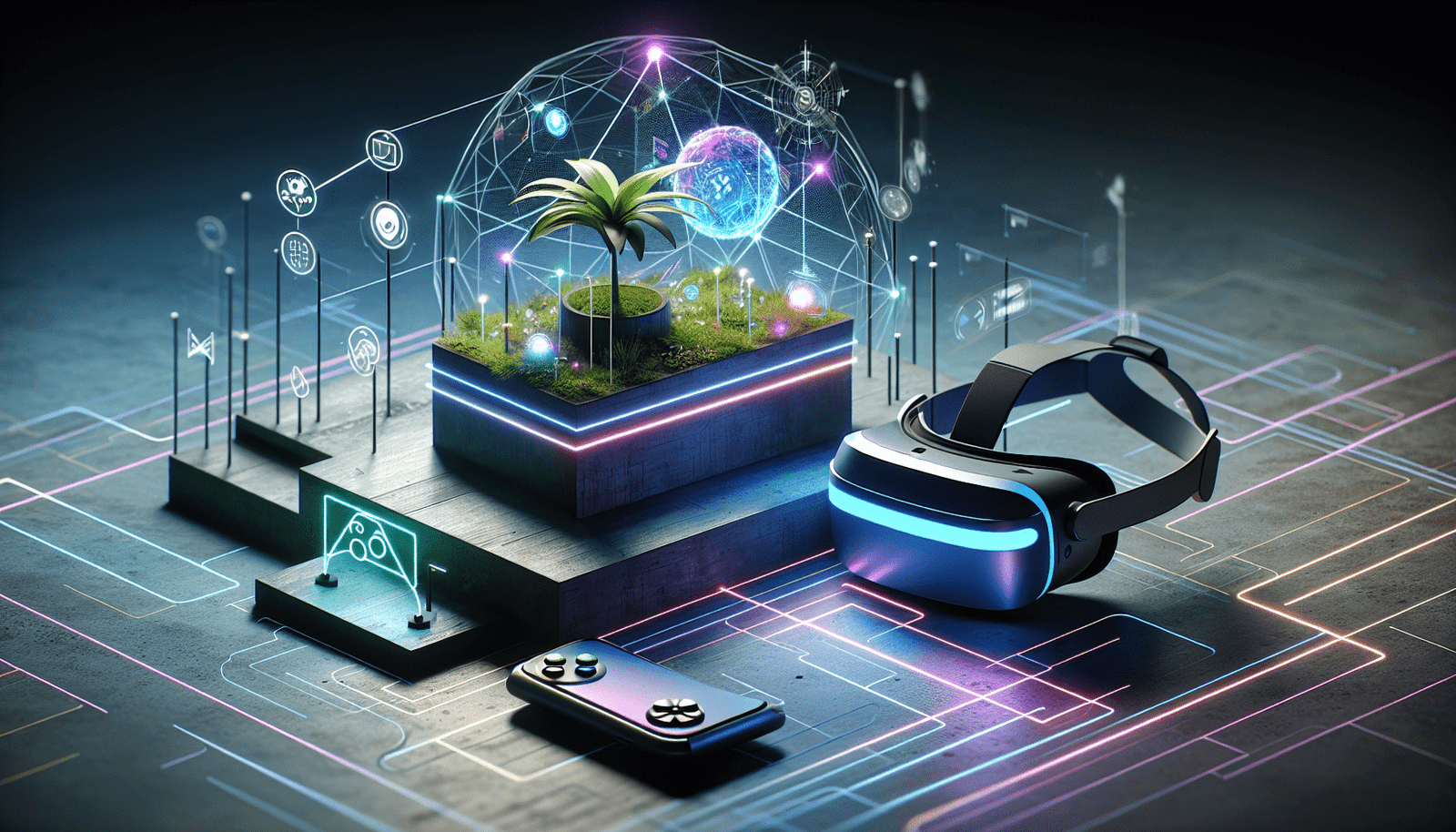What if I told you that the way I interact with the world around me has dramatically changed in recent years? It’s fascinating how technology, particularly Augmented Reality (AR), is reshaping our experiences in everyday life. Whether through my smartphone, glasses, or even some gaming console, AR is altering how I see and engage with my surroundings.
Understanding Augmented Reality (AR)
I often find myself wondering what exactly distinguishes Augmented Reality from virtual reality (VR). While VR immerses me entirely in a digital environment, AR overlays digital content onto my real-world environment. This integration creates a rich interaction with both the physical and digital worlds, which can make my experiences more engaging and interactive.
The Basics of Augmented Reality
At its core, AR utilizes various technologies, including sensors, cameras, and software. It analyzes me, my environment, and then places digital images and information into my field of vision. This functionality enables AR to enhance how I perceive my surroundings—in real-time.
In a way, it feels like the world around me has new layers. Things that were once separate and distant now feel right in front of me. This technology can transform mundane tasks into fun or practical experiences, enhancing the overall way I interact with the environment.
How AR Works: The Technology Behind It
Understanding the technology behind AR makes me appreciate it even more. Several key components work together to create this wonder:
| Component | Function |
|---|---|
| Sensors | Collect data about the environment and my movements. |
| Cameras | Capture the real world, allowing the software to identify where to overlay digital images. |
| Software | Processes the data and blends the physical and digital views to create the augmented experience. |
| Display | Shows me the combined output, whether it’s through my smartphone, tablet, or specialized glasses. |
Types of Augmented Reality
There are a few different types of AR that have caught my attention over time:
-
Marker-Based AR: This type relies on specific visual markers, like QR codes, to trigger the augmented content. When my camera recognizes the marker, it overlays digital information or images onto it.
-
Markerless AR: This version doesn’t need any physical markers. Instead, it uses GPS, compass data, or a location-based system to determine where to place the digital content. Google Maps’ live view feature is a great example of this.
-
Projection-Based AR: Using hand gestures, projection-based AR can project images or information directly into my environment. I can engage with these projections without needing a screen.
-
Superimposition-Based AR: This type replaces or enhances my view with digital content. For instance, in furniture apps, I can visualize how a piece of furniture would look in my home before making a purchase.
How Augmented Reality Is Transforming Everyday Interactions
The implications of AR are massive, and I can’t help but be excited about the possibilities. It’s transforming how I interact with everything from gaming to shopping and even education. Let’s unpack some areas where AR makes a significant impact.
AR in Gaming
Gaming is perhaps one of the most recognizable fields where AR has flourished. Think about how Pokémon GO allowed me to catch Pokémon in my local park. The digital creatures were displayed in my real world, encouraging me to explore my surroundings while having fun.
In addition to Pokémon GO, games like Harry Potter: Wizards Unite also use AR to enrich gameplay. I can see and interact with magical elements in real time, making the gaming experience more immersive. AR games not only entertain me but also get me moving and exploring in the real world.
AR in Retail and Shopping
When I shop, AR enhances my experience in ways I would never have imagined before. Many retail apps now offer features that allow me to try on clothes virtually. Using my smartphone camera, I can see how a jacket or pair of shoes looks on me without having to step into a fitting room.
Moreover, I can visualize how furniture fits in my home. IKEA’s app demonstrates this perfectly. I can scan my room and place digital furniture where I want it, helping me make informed purchasing decisions without the hassle of returns.
AR in Education
In education, AR is a game-changer. I remember participating in a biology class where we used AR to visualize the human body. By pointing my device at a textbook, it revealed a 3D model of the heart that I could interact with. This kind of immersive experience made complex information more understandable and engaging.
My local museums even use AR to enhance the visitor experience. I can point my device at a painting, and it will provide me with historical context and artist information. This integration of technology and education fosters a deeper understanding of the material I’m learning.
AR in Real Estate
When it comes to real estate, AR has allowed me to take virtual tours of homes from the comfort of my living room. I can visualize a property’s layout and design without physically stepping foot inside. This technology gives me a clearer picture of potential homes before deciding to visit, saving me time and effort.
AR in Healthcare
The healthcare industry is also embracing AR to improve patient outcomes. I’m amazed by how surgeons can use AR during operations to overlay critical information directly onto the surgical area. This technology enhances precision and can potentially save lives by providing real-time data.
In addition, I’ve noticed AR applications for patient education. Seeing a 3D model of an organ or condition helps me understand my health better, transforming what could be abstract medical terms into concepts I can visualize.
AR in Navigation
Navigating unfamiliar areas can be daunting. However, AR has made it easier for me to find my way around. Navigation apps like Google Maps offer an augmented reality feature that overlays directional arrows on the real world, helping me see where I need to go in real-time.
This technology not only minimizes the chances of getting lost but also makes me more aware of my surroundings as I navigate. It feels like having a personal guide right in my pocket.
The Challenges of Augmented Reality
Despite its incredible potential, AR isn’t without its challenges. It’s essential to consider both the technological and ethical implications as I engage with this evolving technology.
Technical Limitations
Although I often marvel at AR’s capabilities, it’s not perfect. It often requires powerful hardware for a seamless experience. This limitation can be frustrating, especially when experiencing lag or poor quality overlays. Moreover, not all devices support AR, which can create a divide among users.
Privacy Concerns
As I use AR applications, my personal data may be collected. This data collection can raise serious privacy concerns. For instance, when I use AR navigation, the app may track my location, which poses a risk if mismanaged. Transparency from companies about how they handle my data will be crucial as AR continues to advance.
Social Interactions
While AR can enhance experiences, it can also detract from genuine interactions. I sometimes notice people engrossed in their smartphones or AR devices rather than engaging with those around them. Striking a balance between the virtual enhancements and real-life connections is essential for maintaining relationships with others.
The Future of Augmented Reality
When I think about the future of AR, I feel excited about countless possibilities. Technological advancements will likely enable more sophisticated, seamless interactions in various domains.
AR in Daily Life
I can foresee a future where AR becomes a part of my daily life in ways I can’t yet imagine. Smart glasses could provide me with endless layers of information, allowing me to interact with my environment more intuitively. For instance, I might be able to get real-time translations of signs in different languages while traveling, making exploration easier.
AR in Communication
Imagine a world where I can communicate with friends and family through AR. Virtual gatherings where I can share digital experiences or places with my loved ones across distances could become a reality. The line between physical and digital communication may blur, leading to new, enriching interactions.
The Role of Artificial Intelligence
The cooperation of AR and Artificial Intelligence (AI) could enhance my experiences significantly. AI could analyze my behaviors, preferences, and interactions, allowing AR applications to offer personalized recommendations and experiences in real-time.
| Domain | Potential AR Integration |
|---|---|
| Entertainment | Interactive movies that change based on my choices |
| Sports | Real-time stats and highlights during games |
| Travel | AR guides that offer tailored recommendations and insights |
My Closing Thoughts
As I reflect on how augmented reality is transforming how I interact with the world, I can’t help but feel a sense of wonder. AR is creating interactive experiences that enrich my daily life, from gaming and learning to shopping and healthcare. However, I also recognize the importance of navigating its challenges responsibly.
This technology has the potential to bridge gaps, enhance communication, and foster deeper understanding. I look forward to seeing how AR continues to evolve and bring people together as it redefines our interactions in both personal and social realms. With each advancement, I see a future where our experiences are more connected and intuitive, ultimately making life a little more exciting and meaningful.






